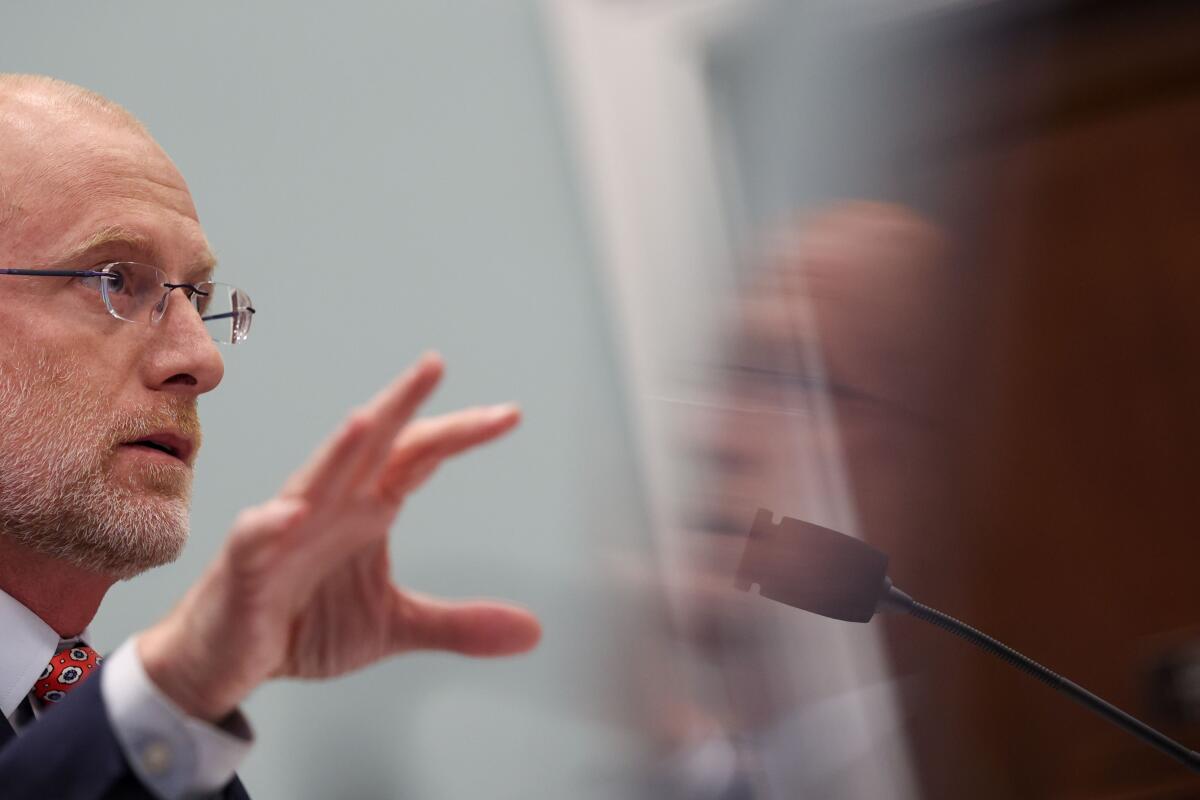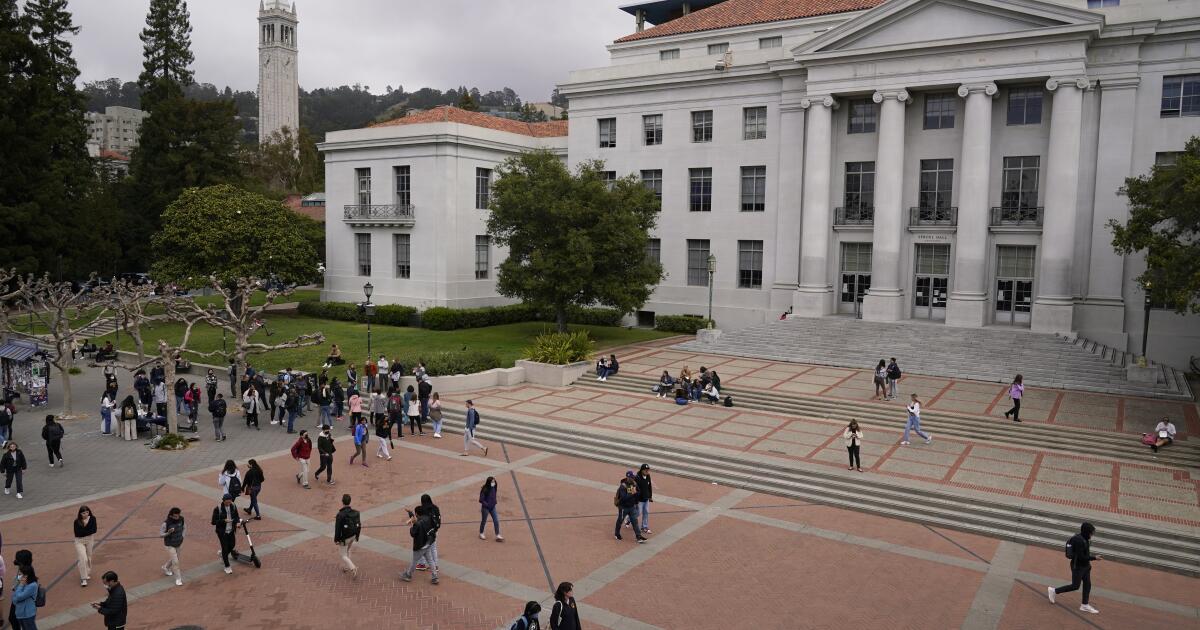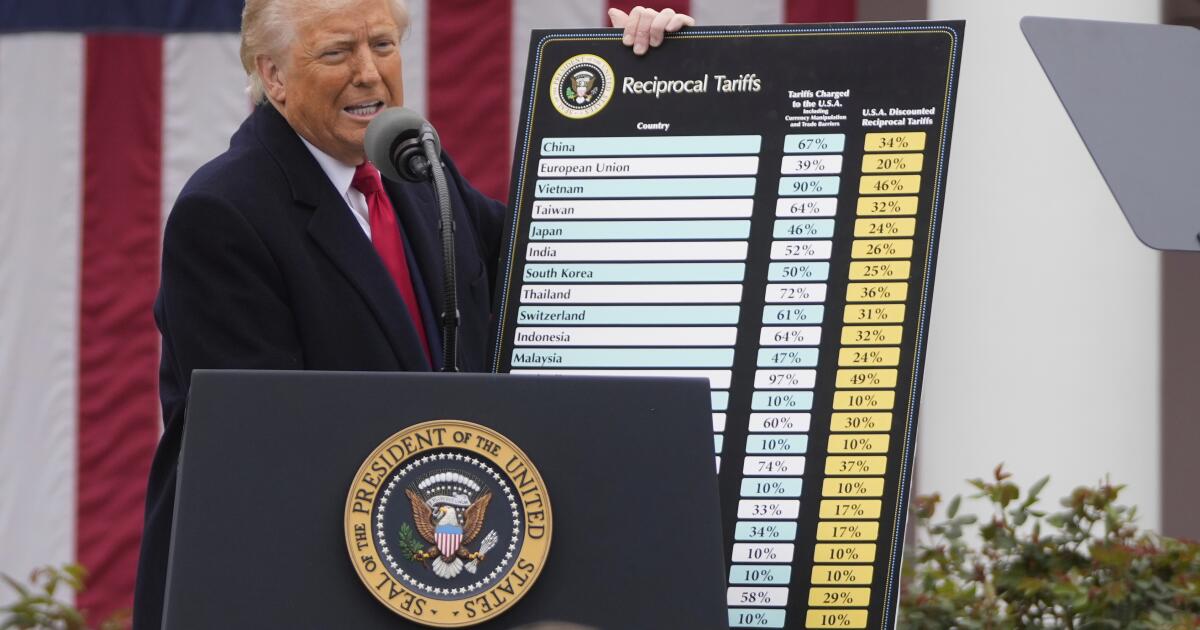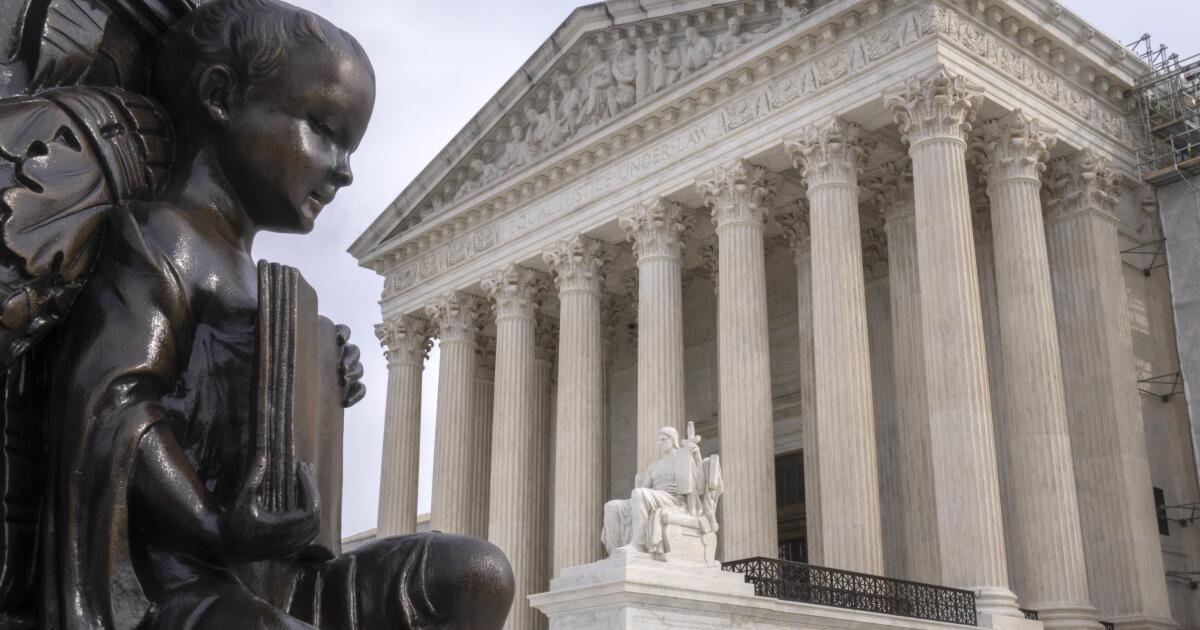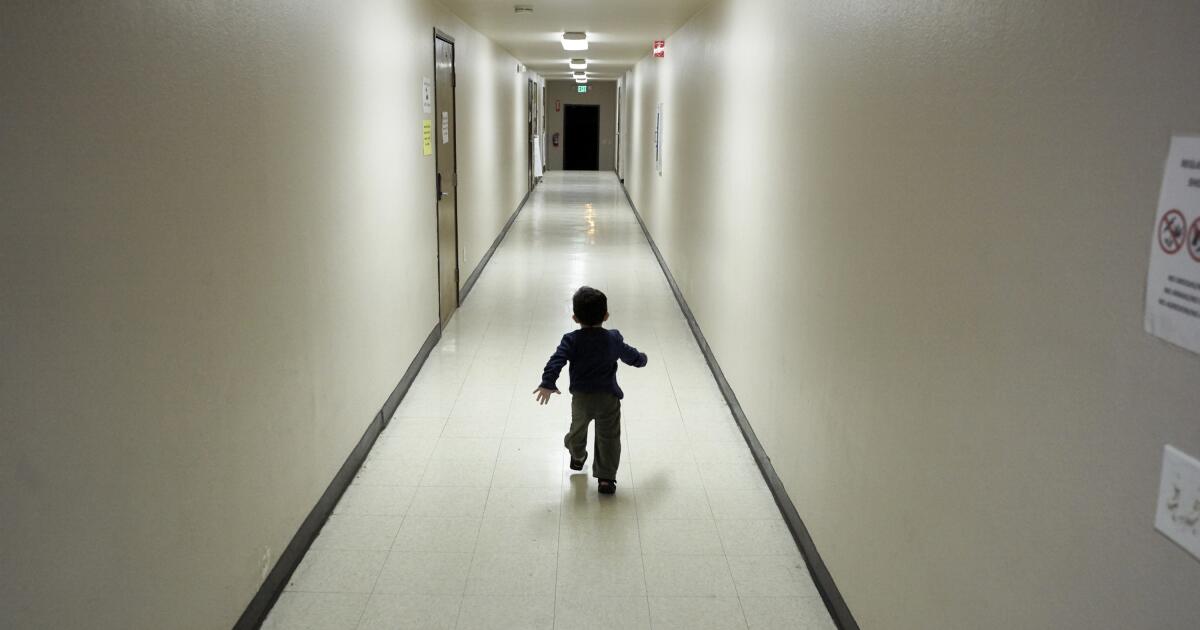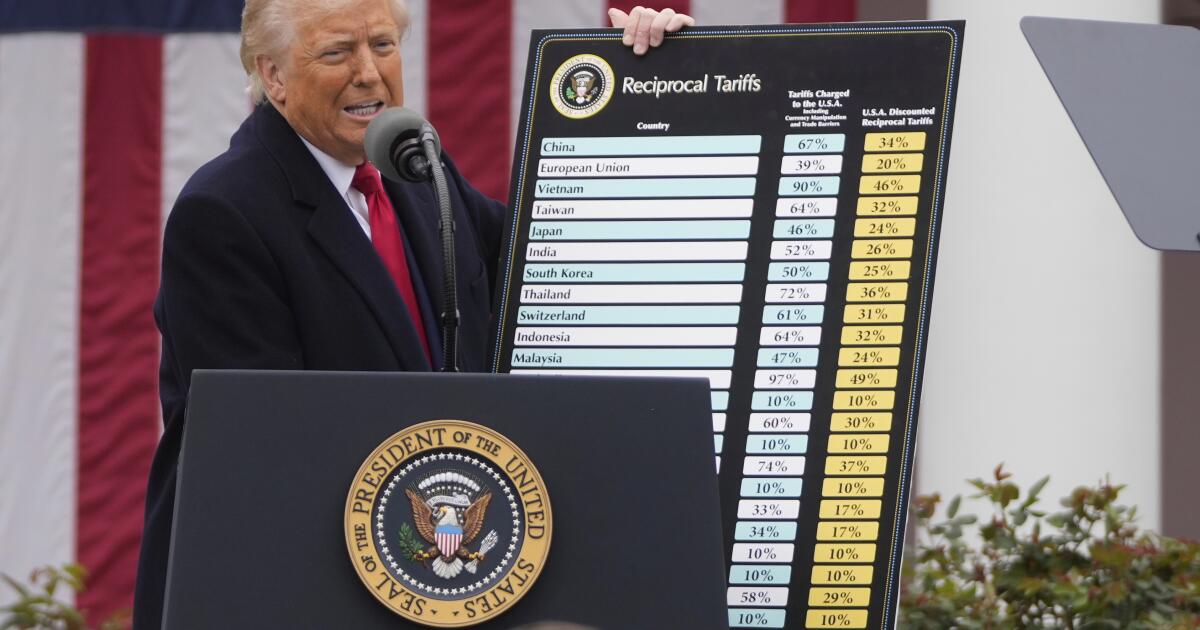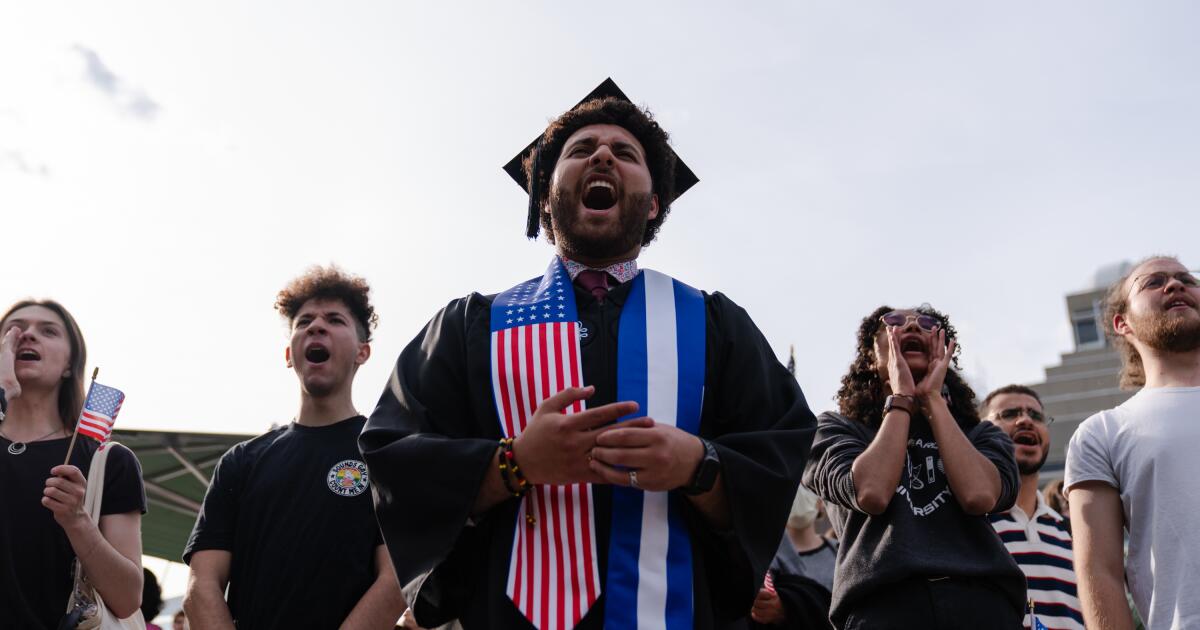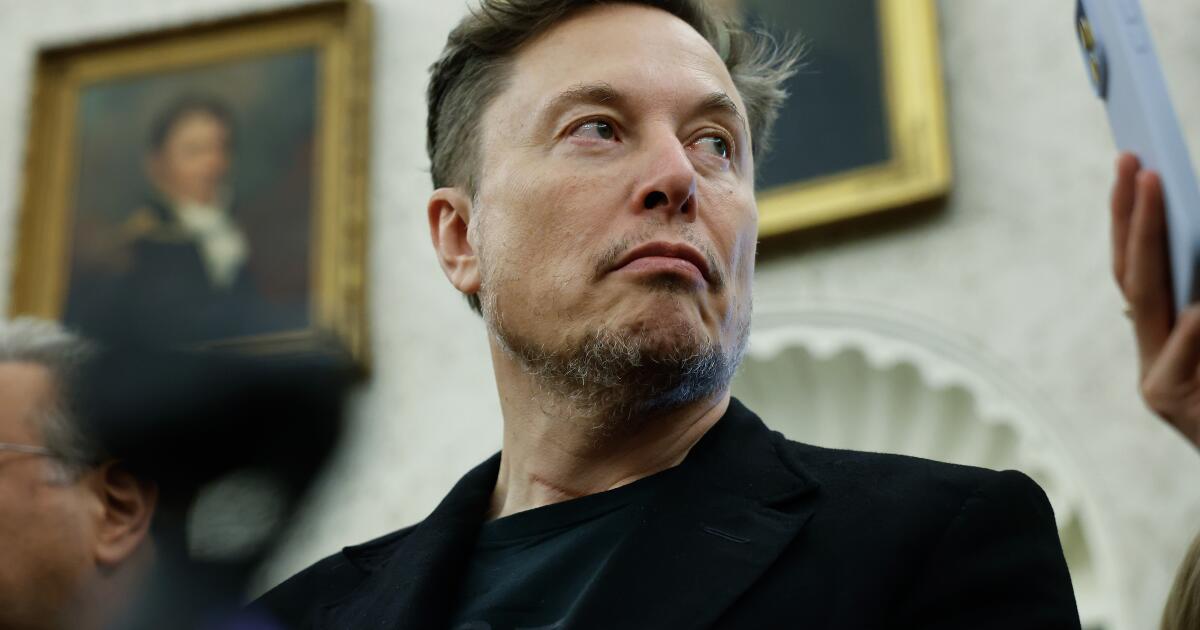FCC commissioner sounds alarms about free speech ‘chilling effect’ under Trump
Federal Communications Commissioner Anna M. Gomez traveled to Los Angeles this week to sound an alarm that attacks on the media by President Trump and his lieutenants could fray the fabric of the 1st Amendment.
Gomez’s appearance Wednesday at Cal State L.A. was designed to take feedback from community members about the changed media atmosphere since Trump returned to office. The president initially expelled Associated Press journalists from the White House, for example. He signed an executive order demanding government funding be cut to PBS and NPR stations.
Should that order take effect, Pasadena-based radio station LAist would lose nearly $1.7 million — or about 4% of its annual budget, according to Alejandra Santamaria, chief executive of parent organization Southern California Public Radio.
“The point of all these actions is to chill speech,” Gomez told the small crowd. “We all need to understand what is happening and we need people to speak up and push back.”
Congress in the 1930s designed the FCC as an independent body, she said, rather than one beholden to the president.
But those lines have blurred. In the closing days of last fall’s presidential campaign, Trump sued CBS and “60 Minutes” over edits to an interview with then-Vice President Kamala Harris, alleging producers doctored the broadcast to enhance her election chances. CBS has denied the allegations and the raw footage showed Harris was accurately quoted.
Trump-appointed FCC Chairman Brendan Carr, upon taking office in January, revived three complaints of bias against ABC, NBC and CBS, including one alleging the “60 Minutes” edits had violated rules against news distortion. He demanded that CBS release the unedited footage.
The FCC’s review of Skydance Media’s pending takeover of CBS-parent Paramount Global has been clouded by the president’s $20-billion lawsuit against CBS. The president rejected Paramount’s offer to settle for $15 million, according to the Wall Street Journal, which said Trump has demanded more.
Two high-level CBS News executives involved in “60 Minutes” were forced out this spring.
Gomez, in an interview, declined to discuss the FCC’s review of the Skydance-Paramount deal beyond saying: “It would be entirely inappropriate to consider the complaint against the ’60 Minutes’ segment as part of a transaction review.” Scrutinizing edits to a national newscast “are not part of the public interest analysis that the commission does when it considers mergers and acquisitions,” she said.
For months, Gomez has been the lone voice of dissent at the FCC. Next month, she will become the sole Democrat on the panel.
The longtime communications attorney, who was appointed to the commission in 2023 by former President Biden, has openly challenged her colleague Carr and his policies that align with Trump’s directives. She maintains that some of Carr’s proposals, including opening investigations into diversity and inclusion policies at Walt Disney Co. and Comcast, go beyond the scope of the FCC, which is designed to regulate radio and TV stations and others that use the public airwaves.
The pressure campaign is working, Gomez said.
“When you see corporate parents of news providers … telling their broadcasters to tone down their criticisms of this administration, or to push out the executive producer of ’60 Minutes’ or the head of [CBS] News because of concerns about retribution from this administration because of corporate transactions — that is a chilling effect,” Gomez said.
Wednesday’s forum, organized by the nonprofit advocacy group Free Press, was punctuated with pleas from professors, journalists and community advocates for help in fending off Trump’s attacks. One journalist said she lost her job this spring at Voice of America after Trump took aim at the organization, which was founded more than 80 years ago to counter Nazi propaganda during World War II.
The Voice of America’s remaining staffers could receive reduction-in-force notices later this week, according to Politico.
Latino journalists spoke about the difficulty of covering some stories because people have been frightened into silence due to the administration’s immigration crackdown.
For now, journalists are able to carry out their missions “for the most part,” said Gabriel Lerner, editor emeritus of the Spanish-language La Opinión.
But he added a warning.
“Many think that America is so exceptional that you don’t have to do anything because fascism will never happen here,” Lerner said. “I compare that with those who dance on the Titanic thinking it will never sink.”
The White House pushed back on such narratives:
“President Trump is leading the most transparent administration in history. He regularly takes questions from the media, communicates directly to the public, and signed an Executive Order to protect free speech on his first day back in office,” spokesperson Anna Kelly said. “He will continue to fight against censorship while evaluating all federal spending to identify waste, fraud, and abuse.”
FCC Commission Chairman Brendan Carr on Capitol Hill.
(Alex Wroblewski / Bloomberg via Getty Images)
Traditionally, the five-member FCC has maintained an ideological balance with three commissioners from the party in power and two from the minority. But the senior Democrat — Geoffrey Starks — plans to step down next month, which will leave just three commissioners: Gomez, Carr and another Republican, Nathan Simington.
Trump has nominated a third Republican, Olivia Trusty, but the Senate has not confirmed her appointment.
Trump has not named a Democrat to replace Starks.
Some on Wednesday expressed concern that Gomez’s five-year tenure on the commission could be cut short. Trump has fired Democrats from other independent bodies, including the Federal Trade Commission and the Consumer Product Safety Commission.
Gomez said if she is pushed out, it would only be because she was doing her job, which she said was defending the Constitution.
Rep. Raul Ruiz (D-Indio) applauded Gomez’s efforts and noted that he’s long appreciated coordinating with her on more routine FCC matters, such as ensuring wider broadband internet access.
“But now the fight is the survival of the free press,” Ruiz said.
He noted that millions of people now get news from non-journalist sources, leading to a rise of misinformation and confusion.
“What is the truth?” Ruiz said. “How can we begin to have a debate? How can we begin to create policy on problems when we can’t even agree on what reality is?”
